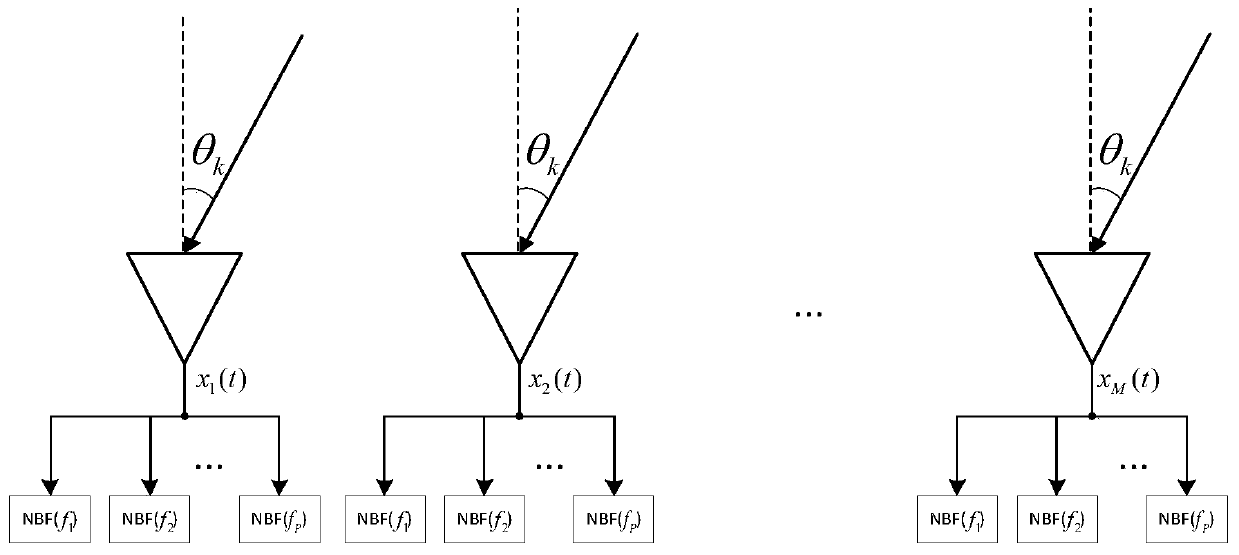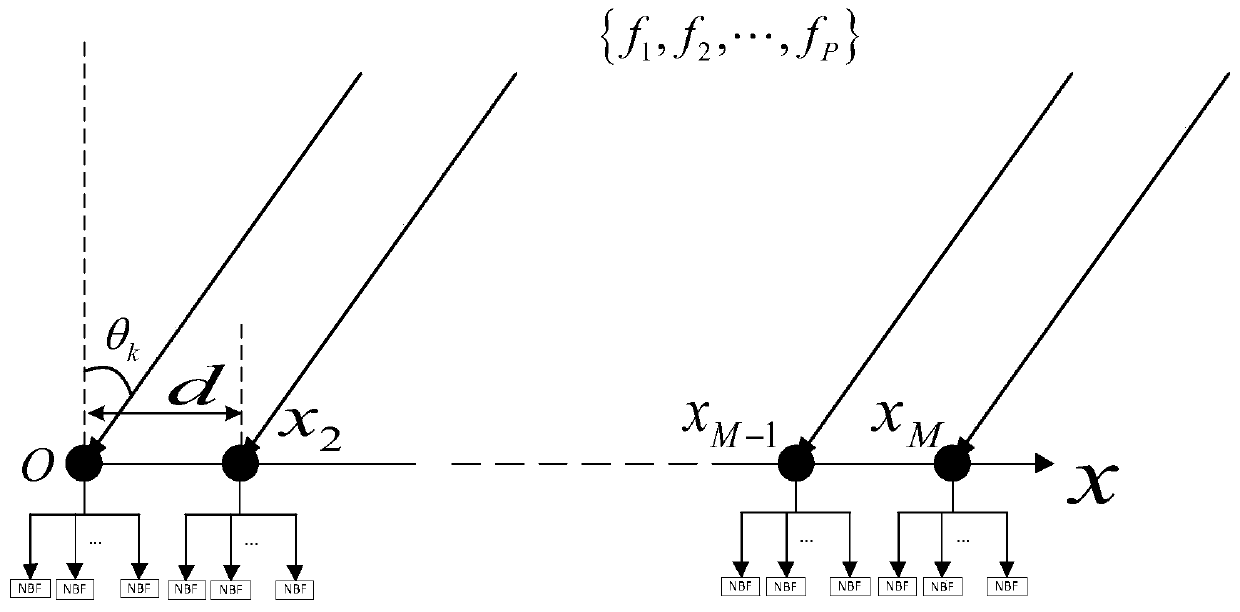One-dimensional DOA estimation method based on specific frequency combination signal
A technology of combining signals and specific frequencies, applied in the field of target positioning, which can solve the problems of array aperture loss and estimation accuracy decline.
- Summary
- Abstract
- Description
- Claims
- Application Information
AI Technical Summary
Problems solved by technology
Method used
Image
Examples
Embodiment 1
[0097] as attached image 3 As shown, this embodiment discloses a one-dimensional DOA estimation method based on multi-frequency transmission signals, including the following steps:
[0098] S1. Construct a time-domain data receiving model based on time-domain sampling data, and then use Fourier transform to obtain a frequency-domain data receiving model and a noise-free data covariance matrix
[0099] It is assumed that there are M array elements distributed on the uniform linear array used for one-dimensional DOA estimation, and the array element spacing is d. Set the narrowband transmission signals of P frequencies, where p, p=1, 2,..., the frequency of the P channel signal is f p . The received signal is the signal that the transmitted signal returns to the array after passing through K far-field targets. Through P narrow-band filters, H time-domain snapshots are sampled to obtain the time-domain received data matrix X, which is expressed as:
[0100]
[0101]where...
Embodiment 2
[0173] This embodiment discloses a one-dimensional DOA estimation method based on multi-frequency transmission signals, and the specific working steps are as follows:
[0174] T1. Assume that the number M of array elements in the uniform linear array is uniformly set to 6.
[0175] transmit signal as Frequency number P=2, frequency combination takes f=[f 1 ,f 2 ] T =[1,6] T kHz; the speed of sound is c=1500m / s, and the frequency of the combined signal data is unified as f after reconstruction 1 = 1kHz, so the minimum half wavelength is 0.75m. The distance between any two adjacent line arrays must be less than or equal to 0.75m. Under this restriction, the array element spacing can be selected arbitrarily, so the average spacing of two uniform line arrays is set to 0.75m, that is, the first array element and The last array element is separated by 3.75m. K=2 target sound sources are placed underwater, and the angles of arrival of the source and target signals are (20°, 6...
PUM
 Login to View More
Login to View More Abstract
Description
Claims
Application Information
 Login to View More
Login to View More - R&D
- Intellectual Property
- Life Sciences
- Materials
- Tech Scout
- Unparalleled Data Quality
- Higher Quality Content
- 60% Fewer Hallucinations
Browse by: Latest US Patents, China's latest patents, Technical Efficacy Thesaurus, Application Domain, Technology Topic, Popular Technical Reports.
© 2025 PatSnap. All rights reserved.Legal|Privacy policy|Modern Slavery Act Transparency Statement|Sitemap|About US| Contact US: help@patsnap.com



